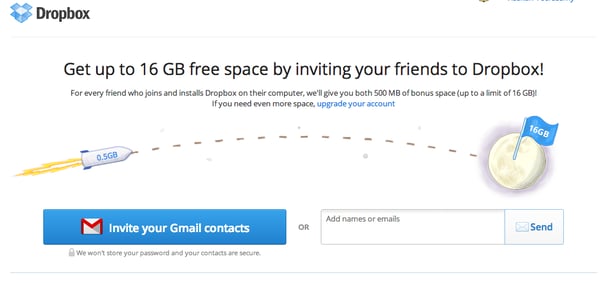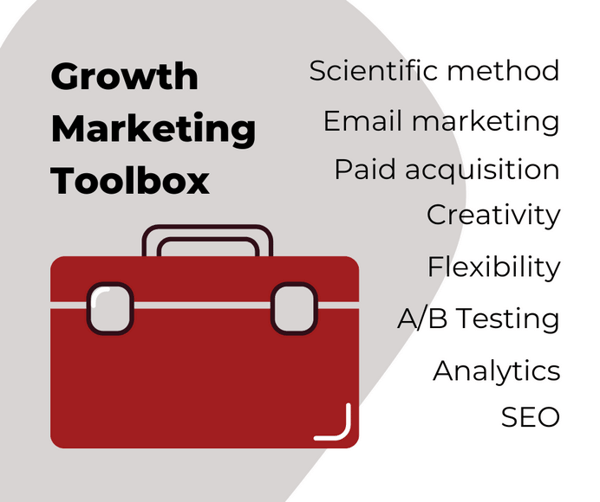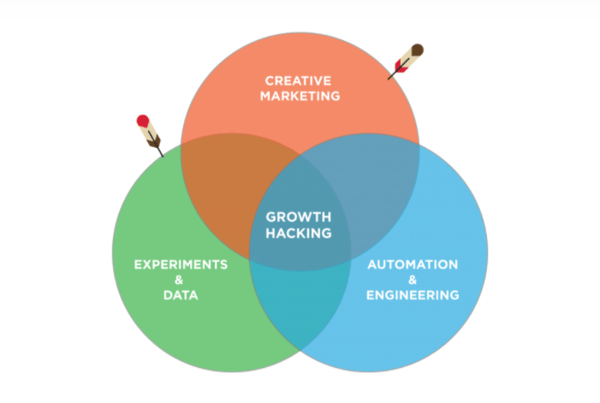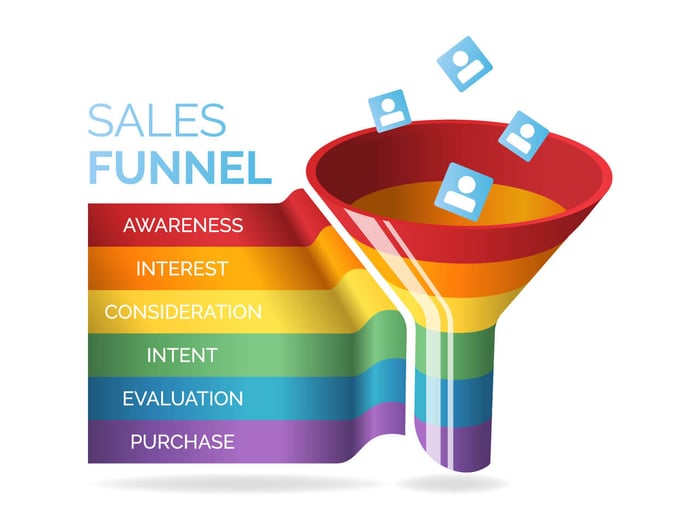We’ve thrown around the term “traditional marketing” quite a bit already, so you might be wondering what we mean by that.
Truthfully, the words “traditional marketing” bring to mind a Mad Men-esque agency full of cigarette smoke, scotch, and wool suits. That’s not exactly what we’re talking about here. But when we do talk about traditional marketing we are referring to a “stuffier” type of marketing than growth marketing.
You see, like we discussed in the earlier sections, growth approaches to marketing don’t rely on best practices or rules of thumb, whereas traditional marketing was built on those ideas. Growth marketing is, in a word, flexible.
Take a look at the sales funnel at the top of the section. Traditional marketing typically deals with the top of the funnel—bringing in awareness and interest.
Growth marketing, in contrast, takes each piece of the funnel into consideration as a means to bring in leads and drive conversions. That’s what we mean when we say growth marketing is a full funnel approach to marketing.
🔬 Growth Marketers as Scientists
Growth marketers are part scientist, part creative genius, part psychologist. They apply the scientific method to marketing to create strategies that are as data-driven as they are idea-driven.
By applying the scientific method to marketing, growth marketers apply specific tests based on research and observations that led them to come up with a hypothesis. In case you need a little reminder of the scientific method, here’s an illustration explaining the steps.

Image Credit: ThoughtCo.
So growth marketing relies on this structured, repeatable process to come up with hypotheses, discover results, come up with conclusions, and iterate on what they find out. Pretty cool, right? That’s what makes growth marketers part scientists—they don’t just rely on style, they believe in results-driven substance.
🎨 Growth Marketers as Creative Geniuses
Creative geniuses might be a bit of a hyperbole, but it is true that good growth marketers must have an eye for good ad creative, as well as creative approaches to “the usual” marketing channels.
Let’s look at a real life application of growth marketing approaches from Dropbox, the file hosting service.
Dropbox used a robust referral program to grow from 100,000 to 4,000,000 users in 15 months. Relying on referrals rather than other avenues for customer acquisition, such as PPC, allowing Dropbox to avoid the typical high costs of ad spend. The money they didn’t have to spend on advertising could be used to improve the product, which in turn brought in more users and kept the existing users.
 Image Credit: Referral Candy
Image Credit: Referral Candy
By embedding this referral program into the core of their product onboarding process and creating a referral “loop” to encourage referred users to refer other customers, Dropbox built a growth marketing strategy that was scalable, low cost, and effective.
💭 Growth Marketers as Psychologists
Growth marketing doesn’t have to mean a huge overhaul of a website or building new creative assets from scratch. It could be as simple as changing the text of a CTA or utilizing different colors on a landing page to evoke an emotional response. This is where the psychology of growth marketing comes into play.
Being able to observe data and make educated guesses about what drives a customer to click or purchase requires at least some curiosity about the “why” behind the customer’s thought process.
💻 What makes us click? Human photos can help boost conversions (when used correctly). →
Ultimately, testing will give you the data about what works. But being able to dive deeper into the buyer’s journey and customer mindset helps growth marketers come up with better hypotheses.
Growth marketing utilizes psychology in such strategies as:
- Emotional marketing
- CTAs
- Social proof
- Email subject lines
- Unique value propositions
- Keyword research











